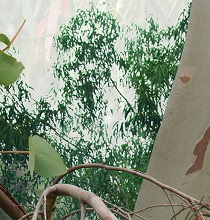 Do you want to work with Australian flora?
Do you want to work with Australian flora?
- Work on re-vegetation projects
- Work in national parks
- Work in an Australian natives nursery
- Work on tree planting programs
- Work in agroforestry
- Work in native tree management
This course first teaches you about different types of Australian flora, plant identification, information sources, planting, feeding, soils, pests & diseases, watering, propagation and transplanting. The remaining lessons then deal with selected varieties of trees, windbreak planting, agroforestry, tree maintenance and tree selection.